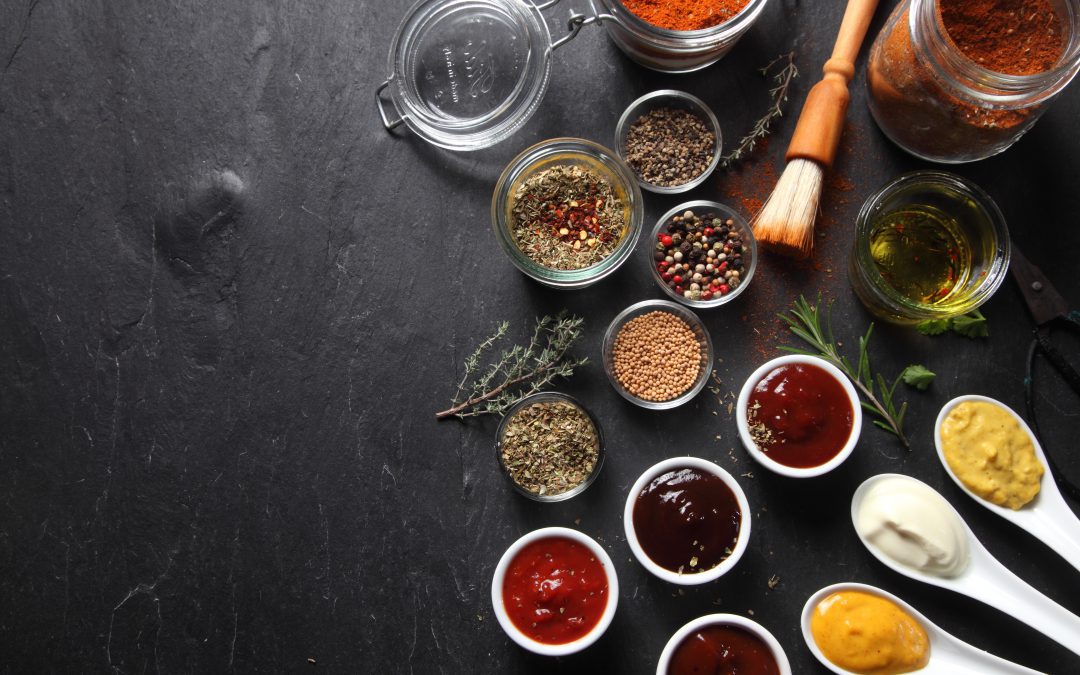Dry Rubs
Dry rubs are simple, versatile, and cheap – even when purchased rather than made from scratch. Like marinades and brines, timing is everything (see the INSTRUCTIONS below).
The ingredients on most store-bought dry rubs will look about the same – and we’ve used many different versions. But we find the home made versions work just as well, and they are very simple to prepare.
Here is the basic dry rub recipe, which can be used to set up all of your other dry rubs:
Ingredients for Dry Rub Starter
- 2 cup Brown sugar
- 1 cup Paprika
- 1/4 cup fine salt
Combine all ingredients, and shake well. This can be stored for several months.
Here are three quick, easy, flavorful rubs, using the basic Dry Rub Starter.
Ingredients for Italian Rub (good for steaks, pork, & chicken)
- 1/2 cup Rub starter
- 1 tsp. onion powder
- 1 tsp. garlic powder
- 1 tsp. dry oregano
- 1 tsp. dry basil
- 1 tsp. dry thyme
Ingredients for Indian-inspired Rub (good for chicken & fish)
- 1/2 cup Rub starter
- 1 tsp. freshly ground coriander
- 1 tsp. ground ginger
- ¼ tsp. garlic powder
- ½ tsp. cardamom
- ¼ tsp. fresh ground cumin
For our friends who’ve experienced our home-smoked salmon, we use this dry rub mix.
Ingredients for Mexican-inspired Rub (good for any ingredient)
- 1/2 cup Rub starter
- 1/2 tsp. freshly ground cumin
- 1/2 tsp. ground ginger
- 1/2 tsp. garlic powder
- ½ tsp. dried oregano
How to use:
For all dry rubs, make sure you pat the main ingredient to remove surface moisture (meat, fish, or vegetables).
Be very generous when applying a rub – and, as the name implies, rub the ingredients gently into the meat, fish, or vegetable.
Cover the dry-rubbed ingredient, and place in the refrigerator for 1-4 hours for optimum effect.
If you see liquid below your meat, fish, or vegetable – don’t worry! This is exactly what needs to happen (see next section on How a Dry Rub Works).
Dry Rubs Are As Easy As 1, 2, 3: 1. Rub & Wait, 2. Cook, 3. Add Sauce near the end.
How a Dry Rub Works
We mentioned that you will see some liquid below the meat, fish, or vegetable. Basically, the salts in the dry rub pull moisture out the meat, fish, or vegetable, allowing the remaining flavors of the rub to enter the ingredient. The rub will melt and the spices are carried into the meat, fish, or vegetable by their own natural juices while the surface remains moist enough to readily take in the flavor of the grill smoke, or the cooking sauce (if you are pan searing or sauteing).
If you want to demonstrate the functional difference between sauces and rubs, try this little trick: Get some BBQ sauce which is thick enough to stick to the meat while it’s cooking and pour a dab out on the counter. Now gently put a drop of water on top of BBQ sauce. Just sorta sits there, doesn’t it? Now pour a spoonful of rub on the same countertop, and gently place a drop of water on it. Sucks it right up, doesn’t it? Since meat, fish, or vegetable starts out as mostly water, dry rubs penetrate quickly.
We use dry rubs almost exclusively when we grill, then use a sauce at the very end of cook on top of the meat, fish, or vegetable. A griller’s rookie mistake is to add one of those high sugar sauces at the beginning of cooking – ending up with a nasty tasting scorched mess. If you accidentally leave your dry-rubbed meat, fish, or vegetable on the grill too long, you just caramelized the sugar.



